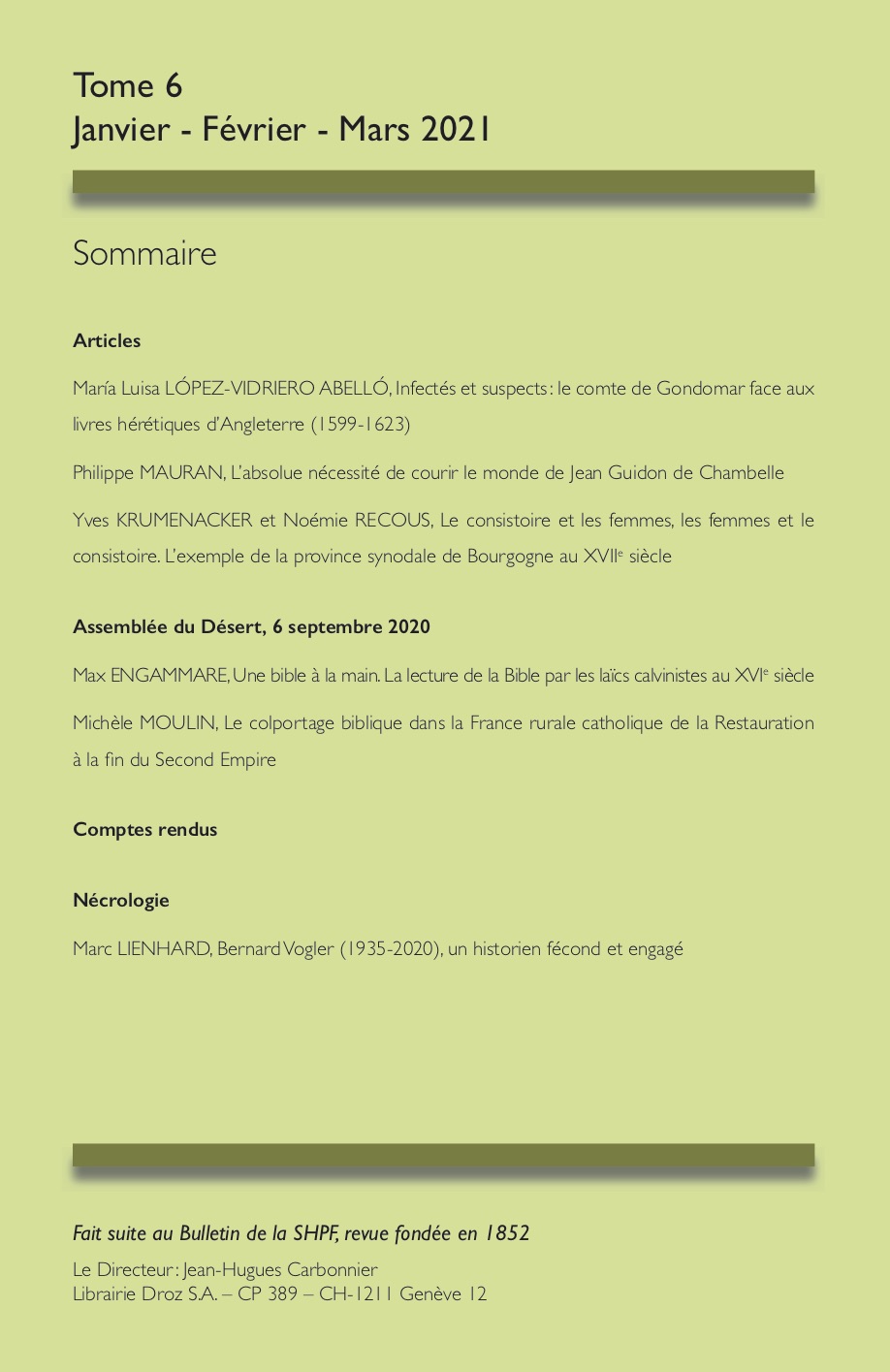Une bible à la main
La lecture de la Bible par les laïcs calvinistes au XVIe siècle
Abstract
The image dominating the collective memory of the Reformed world is that of a family, gathered at nightfall around the dining table, listening to the patriarch who reads the Bible in a large format edition open before him. This scene has been engraved in our imagination by Greuze’s famous “Family Worship” painting and by old engravings. However, this was actually a rare scene in Reformed families of the sixteenth century and belongs rather to the imagination of nineteenth-century biblical societies. It was only in the seventeenth century, and even late in that century, that the Calvinist ecclesiastical authorities in Geneva really promoted the reading of Scripture in the family context. This article discusses the place of lay Bible reading, whether individual or family, in Geneva in the sixteenth and seventeenth centuries, starting with the positions taken by Calvin and Beza, and then noting the practice of lay readers at the hand of the registers of the Genevan Consistory. In a certain sense, it explores an archaeology of the free examination of Scripture by the Reformed.
How to Cite
More Citation Formats
Most read articles by the same author(s)
- Max Engammare, Un siècle de publication de la Bible en Europe : la langue des éditions des Textes sacrés (1455-1555), Histoire et civilisation du livre: Vol. 4 (2008): Les langues imprimées (XVe-XXe siècle)
- Max Engammare, De la peur à la crainte, Recherches & Rencontres: Vol. 5 (1994): La peur au XVIIIe siècle: discours, représentations, pratiques
- Max Engammare, Pascal Arnaud, Gérer une maison d’édition, Histoire et civilisation du livre: Vol. 11 (2015): Strasbourg, le livre et l’Europe, XVe-XXIe siècle
